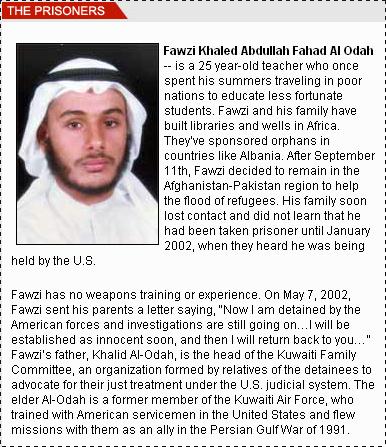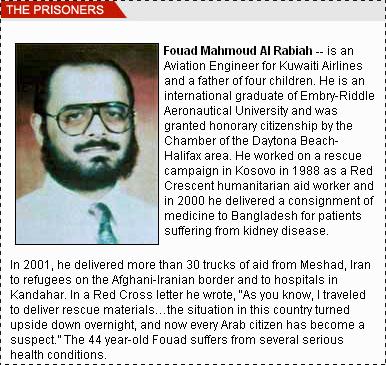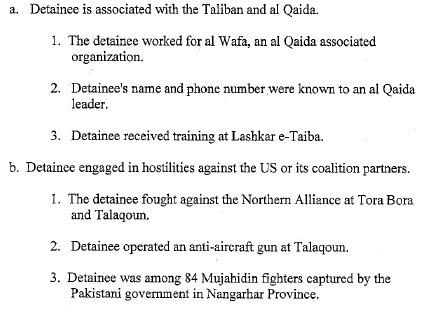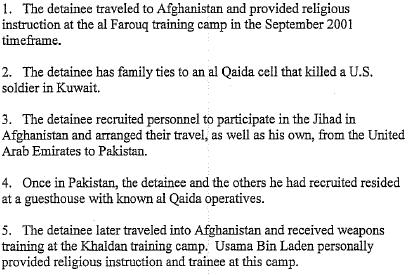How an unscrupulous legal and PR campaign changed the way the world looks at Guantanamo.
The text is as it was published in the Wall Street Journal. The supporting links (highlighted), photos, and media were only added here.
He was the first American to die in what some have called “the real war.” Johnny “Mike” Spann, the 32-year-old CIA paramilitary commando, was interrogating prisoners in an open courtyard at the Qala-I-Jangi fortress in Afghanistan when the uprising of 538 hard-core Taliban and al Qaeda fighters began. Spann emptied his rifle, then his sidearm, then fought hand-to-hand as he was swarmed by raging prisoners screaming “Allahu akbar!”
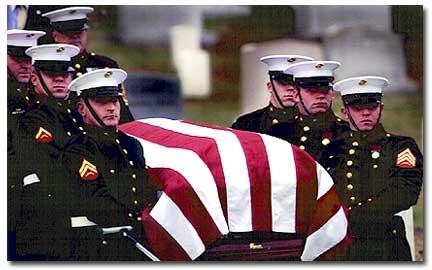
The bloody siege by Northern Alliance and U.S. forces went on for several days, only ending when 86 of the remaining jihadi fighters were smoked out of a basement where they had retreated and where they murdered a Red Cross worker who had gone in to check on their condition. Spann, a former Marine, is credited with saving the lives of countless Alliance fighters and Afghan civilians by standing and firing as they ran for cover. His beaten and booby-trapped body was recovered with two bullet wounds in his head, the angle of trajectory suggesting he had been shot execution style.
One of the committed jihadis who came out of that basement, wounded and unrepentant, was “American Taliban” John Walker Lindh, now serving a 20-year sentence in a federal prison. Another who was shot during the uprising and pulled out of the basement along with Lindh was Nasser Nijer Naser al-Mutairi. Today, the 29-year-old is living somewhere in Kuwait, a free man.
The true story of Mr. Mutairi’s journey, from the uprising in Qala-I-Jangi to Guantanamo Bay’s military detention camp to the privileged life of an affluent Kuwaiti citizen, is one that his team of high-priced lawyers and the government of Kuwait doesn’t want you to know. His case reveals a disturbing counterpoint to the false narrative advanced by Gitmo lawyers and human-rights groups–which holds that the Guantanamo Bay detainees are innocent victims of circumstance, swept up in the angry, anti-Muslim fervor that followed the attacks of September 11, then abused and brutally tortured at the hands of the U.S. military.
Mr. Mutairi was among 12 Kuwaitis picked up in Afghanistan and detained at Guantanamo Bay in 2002. Their families retained Tom Wilner and the prestigious law firm of Shearman & Sterling early that same year. Arguably, it is Mr. Wilner’s aggressive representation, along with the determined efforts of the Kuwait government, that has had the greatest influence in the outcome of all the enemy combatant cases, in the court of law and in the court of public opinion. The lawsuit filed on their behalf, renamed Rasul v. Bush when three cases were joined, is credited with opening the door for the blizzard of litigation that followed.
According to Michael Ratner, the radical lawyer and head of the Center for Constitutional Rights (CCR), the center received 300 pieces of hate mail when the organization filed the very first Guantanamo detainee case in February of 2002. The shocking images of 9/11 were still fresh; it would be three more months until most human remains and rubble would be cleared from ground zero. There was no interest in Guantanamo from the lawyers at premium law firms.
But by 2004, when the first of three detainee cases was heard by the U.S. Supreme Court, the national climate had changed. The country was politically divided, the presidential election was in full swing, and John Kerry was talking about treating terrorism like a criminal nuisance. The Guantanamo cases gave lawyers a chance to take a swipe at the president’s policies, give heroic speeches about protecting the rights of indigents, and be a part of the kind of landmark legal cases that come along once in a lifetime. The Guantanamo Bay Bar increased from a lonely band of activist lawyers operating out of a run down office in Greenwich Village to an association of 500 lawyers. Said Mr. Ratner about the blue chip firms that initially shunned these cases, “You had to beat the lawyers off with a stick.”
Mr. Wilner and his colleagues at Shearman & Sterling were the exception, although he has been exceedingly coy about the true nature of his firm’s role. Unlike the many lawyers who later joined in the litigation on a pro bono basis, Shearman & Sterling was handsomely paid. Mr. Wilner has repeatedly stated that the detainees’ families insisted on paying Shearman & Sterling for its services and that the fees it earned have been donated to an unspecified 9/11-related charity. According to one news report, the families had spent $2 million in legal fees by mid-2004. In truth, Kuwaiti officials confirmed that the government was footing the bills.
How did Shearman & Sterling get tapped for this historic assignment? Speaking at Seton Hall Law School in fall of 2006, Mr. Wilner recounted that he visited the facility at Guantanamo Bay in 2002, months before he met the Kuwaiti 12’s families. What was Mr. Wilner doing at Gitmo more than two years before Rasul established the legal basis for lawyers getting access to detainees inside the camp? One of his Gitmo legal colleagues has said that Mr. Wilner was brought into the case by an oil industry client.
It turns out that Shearman & Sterling, a 1,000-lawyer firm with offices in 19 cities all over the world, has substantial business dealings on six continents. Indeed, Shearman’s client care for Middle Eastern matters has established a new industry standard: The firm’s Abu Dhabi office states that it has pioneered the concept of “Shariah-compliant” financing. In Kuwait, the firm has represented the government on a wide variety of matters involving billions of dollars worth of assets. So the party underwriting the litigation on behalf of the Kuwaiti 12–from which all of the detainees have benefited–is one of Shearman & Sterling’s most lucrative OPEC accounts.
Shearman & Sterling did far more than just write legal briefs and shuttle down to Gitmo to conduct interviews about alleged torture for the BBC. In addition to its legal services, the firm registered as an agent of a foreign principal under the Foreign Agents Registration Act of 1938 (FARA) as well as the Lobbying Disclosure Act of 1995 (LDA) to press the Kuwaiti detainees’ cause on Capitol Hill. Shearman reported $749,980 in lobbying fees under FARA for one six-month period in 2005 and another $200,000 under the LDA over a one-year period between 2005 and 2006. Those are the precise time periods when Congress was engaged in intense debates over the Detainee Treatment Act and the Military Commissions Act, legislation which Shearman & Sterling and its Kuwaiti paymasters hoped would pave the way for shutting down Guantanamo permanently and setting their clients free.
Mr. Wilner, a media-savvy lawyer who immediately realized that the detainee cases posed a tremendous PR challenge in the wake of September 11, hired high-stakes media guru Richard Levick to change public perception about the Kuwaiti 12. Mr. Levick, a former attorney whose Washington, D.C.-based “crisis PR” firm has carved out a niche in litigation-related issues, has represented clients as varied as Rosie O’Donnell, Napster, and the Roman Catholic Church. Mr. Levick’s firm is also registered under FARA as an agent of a foreign principal for the “Kuwaiti Detainees Committee,” reporting $774,000 in fees in a one year period. After the U.S. Supreme Court heard the first consolidated case, the PR campaign went into high gear, Mr. Levick wrote, to “turn the Guantanamo tide.”
In numerous published articles and interviews, Mr. Levick has laid out the essence of the entire Kuwaiti PR campaign. The strategy sought to accomplish two things: put a sympathetic “human face” on the detainees and convince the public that it had a stake in their plight. In other words, the militant Islamists who traveled to Afghanistan to become a part of al Qaeda’s jihad on America had to be reinvented as innocent charity workers swept up in the war after 9/11. The committed Islamist who admitted firing an AK-47 in a Taliban training camp became a “teacher on vacation” who went to Afghanistan in 2001 “to help refugees.” The member of an Islamist street gang who opened three al-Wafa offices with Suliman Abu Ghaith (Osama Bin Laden’s chief spokesman) to raise al Qaeda funds became a charity worker whose eight children were left destitute in his absence. All 12 Kuwaitis became the innocent victims of “bounty hunters.”
A Montreal-based marketing firm was hired to create the families’ full-service Web site which fed propaganda — unsourced, unrebutted and uninvestigated by the media — aimed at the media all over the world. Creating what Mr. Levick calls a “war of pictures,” the site is replete with images meant to appeal to Americans: smiling Kuwaiti families wearing T-shirts and baseball caps, cute children passing out yellow ribbons.
After the Rasul decision, the PR momentum picked up speed and the Supreme Court became, in Mr. Levick’s words, their “main weapon,” a “cudgel” that forced more attention in what he calls the traditional “liberal” press. Dozens of op-eds by Mr. Wilner and the family group leader (described as a U.S.-trained former Kuwaiti Air Force pilot who cherishes the memory of drinking Coca Cola) were aimed at the public and Congress.
Mr. Levick maintains that a year and a half after they began the campaign, their PR outreach produced literally thousands of news placements and that, eventually, a majority of the top 100 newspapers were editorializing on the detainees’ behalf. Convinced that judges can be influenced by aggressive PR campaigns, Mr. Levick points to rulings in the detainee cases which openly cite news stories that resulted from his team’s media outreach.
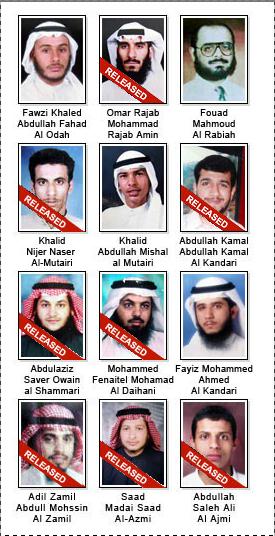
The Kuwaiti 12 case is a primer on the anatomy of a guerilla PR offensive, packaged and sold to the public as a fight for the “rule of law” and “America’s core principles.” Begin with flimsy information, generate stories that are spun from uncorroborated double or triple hearsay uttered by interested parties that are hard to confirm from halfway around the world. Feed the phonied-up stories to friendly media who write credulous reports and emotional human interest features, post them on a Web site where they will then be read and used as sources by other lazy (or busy) media from all over the world. In short, create one giant echo chamber.
Mr. Mutairi’s profile is the most brazen example of Mr. Levick’s confidence that the media can be easily manipulated. The Web site describes him as a member of an apolitical and peaceful sect of missionaries, and that he went to Afghanistan in October of 2000 to “minister in the small mosques and schools” in the country’s poorer regions.
Everything Mr. Levick did was in partnership with Tom Wilner and the law firm of Sherman & Sterling. It was their joint litigation-PR plan, with the Guantanamo lawsuits helping the PR messaging and the PR messaging helping the lawsuits. All of this may be legal, but it is hardly ethical.
Shearman & Sterling lawyers aren’t hucksters crassly promoting a cheap product; they are sworn officers of the court volunteering to represent alien enemy combatants in a time of war, interjecting themselves in cases that affect how American soldiers on the battlefield do their job. It is one thing to take these cases in order to achieve the proper balance between due process concerns and unprecedented national security issues. It is another to hire PR and marketing consultants to create image makeovers for suspected al Qaeda financiers, foot soldiers, weapons trainers and bomb makers, all of which is financed by millions of dollars from a foreign country enmeshed in the anti-American, anti-Israel elements of Middle East politics.
Although a few mistakes were made when some of the Guantanamo detainees were taken into custody in the fog of war, others were indisputably captured with AK-47s still smoking in their hands. Any one of those who have been properly classified in Combat Status Review Tribunals as an unlawful enemy combatant could be the next Mohamed Atta or Hani Hanjour, who, if captured in the summer of 2001, would have been described by these lawyers as a quiet engineering student from Hamburg and a nice Saudi kid who dreams of learning to fly.
How we deal with alien enemy combatants goes to the essence of the debate between those who see terrorism as a series of criminal acts that should be litigated in the justice system, one attack at a time, and those who see it as a global war where the “criminal paradigm” is no more effective against militant Islamists whose chief tactic is mass murder than indictments would have been in stopping Hitler’s march across Europe. Michael Ratner and the lawyers in the Gitmo bar have expressly stated that the habeas corpus lawsuits are a tactic to prevent the U.S. military from doing its job. He has bragged that “The litigation is brutal [for the United States] … You can’t run an interrogation … with attorneys.” No, you can’t. Lawyers can literally get us killed.
We may never know how many of the hundreds of repatriated detainees are back in action, fighting the U.S. or our allies thanks to the efforts of the Guantanamo Bay Bar. Approximately 20 former detainees have been confirmed as having returned to the battlefield, 12 of them killed by U.S. forces. Of the eight detainees who were rendered back to Kuwait for review of their cases, all were acquitted in criminal proceedings, including Mr. Mutairi, who has given press interviews admitting that he was shot in the November 2001 uprising at Qala-I-Jangi.
Only one Kuwaiti, Adel al-Zamel, has been sent to prison for crimes committed before his work with al-Wafa in Afghanistan. A member of an Islamist gang that stalked, videotaped and savagely beat “adulterers,” he was sentenced to a year in prison in 2000 for attacking a coed sitting in her car. These are some of the men Tom Wilner was talking about when he went on national television and said with a straight face, “My guys . . . loved the United States.”
The guy who really loved the United States stood and fought to protect us from radical Islamists, rather than enable them. In his job application for the CIA, Mike Spann wrote, “I am an action person that feels personally responsible for making any changes in this world that are in my power because if I don’t no one else will.” We owe our unqualified support and steadfastness to the warriors who take personal responsibility when no one else will.
Allowing lawyers to subvert the truth and transform the Constitution into a lethal weapon in the hands of our enemies–while casting themselves as patriots–makes a mockery of the sacrifices made by true patriots like Mike Spann. If Sens. Patrick Leahy and Arlen Specter, chairman and ranking members, respectively, of the Senate Judiciary Committee succeed in their plan to turn enemy combatant cases over to the federal courts, we will sorely rue the day that we eliminated “lawyer-free zones.”
Ms. Burlingame, a former attorney and a director of the World Trade Center Memorial Foundation, is the sister of Charles F. “Chic” Burlingame III, the pilot of American Airlines flight 77, which was crashed into the Pentagon on Sept. 11, 2001.
On March 14, 2007, a response. See Did the detainee’s lawyers lie?
Related article: Democrats Want Gitmo Prisoners Sent to U.S.
And to make the measure more palatable to Republicans, [Rep. Jim] Moran [(D-Va.] said he would suggest the detainees be transferred to military bases that would allow them to be tried in federal courts under the Richmond-based 4th U.S. Circuit Court of Appeals.
…
A Democratic official involved in developing the Guantanamo strategy said the Democrats, who control the new Congress, expect Republicans to object to bringing the detainees onto U.S. soil because their attorneys would surely argue they were entitled to myriad new rights.
…
A senior administration official, also speaking on the condition of anonymity, said he was puzzled by the Democrats’ frequent discussion of closing Guantanamo.
“While we want to bring these guys to trial as quickly as possible, where do Democrats believe we should keep Khalid Sheikh Mohammed, the mastermind of the 9/11 plot?” the official asked. “Which American city will they choose to place America’s most wanted terrorists?”
